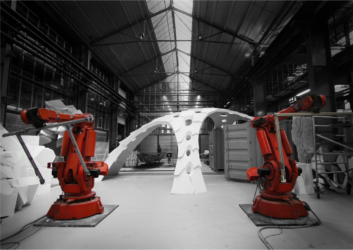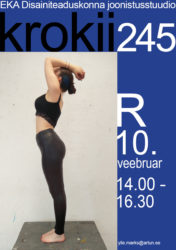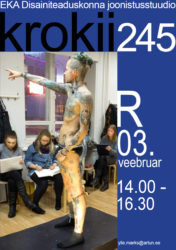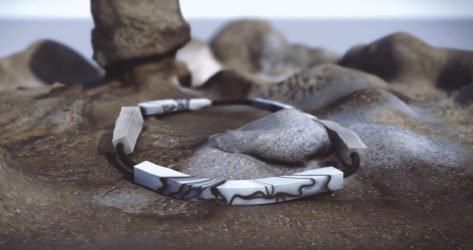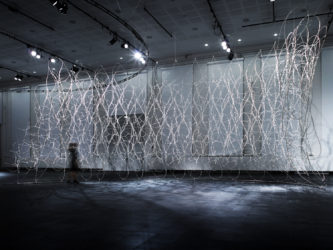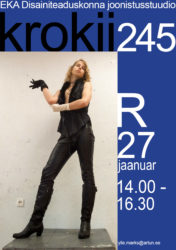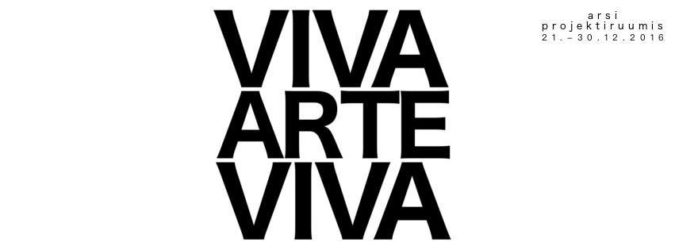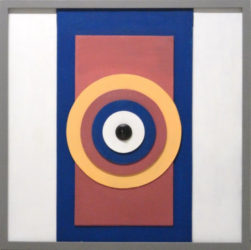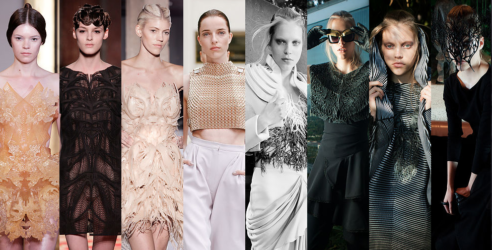Academic Affairs OfficeAccessory DesignAnimationArchitecture and Urban DesignArt EducationCenter for Flat TechnologiesCeramicsCultural Heritage and ConservationDepartmentsDesign and Technology FuturesDoctoral SchoolDrawingFacilities and WorkshopsFaculty of ArchitectureFaculty of Art and CultureFaculty of DesignFaculty of Fine ArtsFashion DesignFinancial DepartmentGalleryGlass ArtGraphic ArtGraphic DesignInstallation and SculptureInstitute of Art History and Visual CultureInternational OfficeIT OfficeJewellery and BlacksmithingLandscape ArchitectureLibraryLinnaehitus @enMaking SpaceNew MediaOffice of the RectorateOpen AcademyPaintingPerforming ArtsPhotographyProduct DesignRectorateResearch and Development OfficeScenographySupport UnitsTextile DesignUncategorizedUrban PlanningUrban Studies
OPEN LECTURE: JELLE FERINGA, 16.02 at 6PM
16.02.2017
OPEN LECTURE: JELLE FERINGA, 16.02 at 6PM
Arhitektuur ja linnaplaneerimine
What strings architecture, economy, robotics & modernity together? Open Lecture by Jelle Feringa
On February 16th at 6 pm, the Open Lecture Series of the Faculty of Architecture will be happy to present Dutch architect Jelle Feringa at Kanuti Gildi SAAL (Pikk 20, Tallinn). For the last few years, Feringa has been working on projects that try to harness the full potential of robots in architecture, building up Danish architectural robotics company Odico. In Tallinn, Feringa will talk about the changes that robotics are bringing to architecture and to the cities around us. In the future, what will the role of the architect be? Open Lectures are open to all architecture students, professionals and general audience intrigued by spatial matters: the lectures are in English and free of charge.
In addition to the open lecture, Feringa will give a small workshop in Tallinn on the following day, focussing on introducing students to the new robot of the Estonian Academy of Arts architecture department and testing its capabilities. “This is one of the most important issues of contemporary architecture: how to transfer digital information into physical material without compromising the geometry and spatial structure and yet with obtainable financial and time resources. Using robots is one of the ways to make sure geometrically intricate spaces and shapes can be transferred from digital world into our daily material experiences,” explains Dean of Faculty of Architecture Toomas Tammis.
Jelle is co-founder and CTO at Odico formwork robotics the first factory to specialize in architectural robotics. He is co-founder of EZCT Architecture & Design Research The work of the office is widely exhibited, exhibitions include the Mori Art Museum, Tokyo, Archilab, Orléans, Barbican Gallery, London Design, Miami/Basel and is part of the permanent collection of the Centre Pompidou, Paris. Jelle is a PhD candidate at the Hyperbody research group, TU Delft. His efforts in architectural robotics, both industrial and experimental are currently on display at the Zaha Hadid gallery in London, as part of the Meta Utopia exposition.
More about Odico: http://www.odico.dk/
Open Lecture Series is supported by Estonian Cultural Endowment and organised by the Estonian Academy of Arts architecture department. All lectures are in English and free of charge.
Series curated by Sille Pihlak and Siim Tuksam (PART)
www.avatudloengud.ee
https://www.facebook.com/EKAarhitektuur/
Let us know if You are coming: https://www.facebook.com/events/194591041017897/
More info: Pille Epner / arhitektuur@artun.ee / +372 642 0071
Posted by Pille Epner — Permalink
OPEN LECTURE: JELLE FERINGA, 16.02 at 6PM
Thursday 16 February, 2017
Arhitektuur ja linnaplaneerimine
What strings architecture, economy, robotics & modernity together? Open Lecture by Jelle Feringa
On February 16th at 6 pm, the Open Lecture Series of the Faculty of Architecture will be happy to present Dutch architect Jelle Feringa at Kanuti Gildi SAAL (Pikk 20, Tallinn). For the last few years, Feringa has been working on projects that try to harness the full potential of robots in architecture, building up Danish architectural robotics company Odico. In Tallinn, Feringa will talk about the changes that robotics are bringing to architecture and to the cities around us. In the future, what will the role of the architect be? Open Lectures are open to all architecture students, professionals and general audience intrigued by spatial matters: the lectures are in English and free of charge.
In addition to the open lecture, Feringa will give a small workshop in Tallinn on the following day, focussing on introducing students to the new robot of the Estonian Academy of Arts architecture department and testing its capabilities. “This is one of the most important issues of contemporary architecture: how to transfer digital information into physical material without compromising the geometry and spatial structure and yet with obtainable financial and time resources. Using robots is one of the ways to make sure geometrically intricate spaces and shapes can be transferred from digital world into our daily material experiences,” explains Dean of Faculty of Architecture Toomas Tammis.
Jelle is co-founder and CTO at Odico formwork robotics the first factory to specialize in architectural robotics. He is co-founder of EZCT Architecture & Design Research The work of the office is widely exhibited, exhibitions include the Mori Art Museum, Tokyo, Archilab, Orléans, Barbican Gallery, London Design, Miami/Basel and is part of the permanent collection of the Centre Pompidou, Paris. Jelle is a PhD candidate at the Hyperbody research group, TU Delft. His efforts in architectural robotics, both industrial and experimental are currently on display at the Zaha Hadid gallery in London, as part of the Meta Utopia exposition.
More about Odico: http://www.odico.dk/
Open Lecture Series is supported by Estonian Cultural Endowment and organised by the Estonian Academy of Arts architecture department. All lectures are in English and free of charge.
Series curated by Sille Pihlak and Siim Tuksam (PART)
www.avatudloengud.ee
https://www.facebook.com/EKAarhitektuur/
Let us know if You are coming: https://www.facebook.com/events/194591041017897/
More info: Pille Epner / arhitektuur@artun.ee / +372 642 0071
Posted by Pille Epner — Permalink
10.02.2017
Croquis
Disainiteaduskond
This time the model in EAA Design Faculty’s drawing studio’s croquis is Johanna.
Check out our fb album https://www.facebook.com/yllemarks/media_set?set=a.658254700865823.1073741826.100000438963959&type=3
Posted by Ülle Marks — Permalink
Croquis
Friday 10 February, 2017
Disainiteaduskond
This time the model in EAA Design Faculty’s drawing studio’s croquis is Johanna.
Check out our fb album https://www.facebook.com/yllemarks/media_set?set=a.658254700865823.1073741826.100000438963959&type=3
Posted by Ülle Marks — Permalink
03.02.2017
Croquis
Disainiteaduskond
This time the model in EAA Design Faculty’s drawing studio’s croquis is Celios.
Check out our fb album https://www.facebook.com/yllemarks/media_set?set=a.658254700865823.1073741826.100000438963959&type=3
Posted by Ülle Marks — Permalink
Croquis
Friday 03 February, 2017
Disainiteaduskond
This time the model in EAA Design Faculty’s drawing studio’s croquis is Celios.
Check out our fb album https://www.facebook.com/yllemarks/media_set?set=a.658254700865823.1073741826.100000438963959&type=3
Posted by Ülle Marks — Permalink
24.01.2017 — 14.02.2017
Sofia Hallik “Born-Digitals” 26.01.-14.02.2017 HOP gallery
Jewellery and Blacksmithing
Sofia Hallik “Born-Digitals”
26.01.-14.02.2017
HOP gallery
Tallinn
Hobusepea 2
You are kindly invited to Sofia Hallik’s solo exhibition “Born-Digitals” in HOP gallery.
Sofia Hallik (1991) is a jewellery artist and PhD student at the Estonian Academy of Arts (since 2015). In her doctoral thesis “Theomorphic Jewellery Essence by Means of Virtuality and Autonomy” (supervisors prof. Kadri Mälk and Dr. Jaak Tomberg) Sofia focuses on a search of divine form through innovative materials and technologies. What interests her the most is the way суberspace and digital technology influence jewellery.
Sofia’s solo exhibition “Born-Digitals” deals with the influence of cyberspace and the use of digital technology in the manipulation of work of art. There is a dematerialization and virtualization of an artwork in general happening in the aftermath of the Digital Revolution, which affects among other things, an art form that is highly physical form of art, namely jewellery. The aim of Sofia’s work is represented in the shameless and conscious adaptation of the conflicting concepts of handwork and machine work. Exactly at the junction of these two concepts there arises something truly attractive that is actually a taste of our reality.
In her new series of works, Sofia creates a dreamlike installation in both real and virtual rooms. Represented jewellery in particular serves as Sofia’s radical approach, allowing the artist to express the idea of Perfection of Virtual.
Sofia has graduated from Estonian Academy of Arts with a Master’s degree with cum laude in 2015. Sofia has had three solo exhibitions, the last one took place at HOP gallery in summer 2015; In 2015 Sofia was awarded the Foundation Noor Ehe / Young Estonian Jewellery grant. Her work has been exhibited at international exhibitions, the latter and the most important are “European Prize for Applied Arts 2015” in Belgium, Mons; “Marzee International Graduate Show 2015” in the Netherlands; “ESTONISHING!” exhibition at Thomas Cohn gallery as a part of Munich Jewellery Week 2016 and in Brazil, São Paulo.
We would like to thank: Kadri Mälk, Jaak Tomberg, Maria Valdma, Raiko Suits, Viktorija Domarkaite, Andres Hallik, Margarita Teeääre, EAA Jewellery and Blacksmithing department.
The exhibition was made possible with the support of the Cultural Endowment of Estonia.
HOP gallery exhibitions are supported by the Estonian Ministry of Culture and the Cultural Endowment of Estonia.
Posted by Solveig Jahnke — Permalink
Sofia Hallik “Born-Digitals” 26.01.-14.02.2017 HOP gallery
Tuesday 24 January, 2017 — Tuesday 14 February, 2017
Jewellery and Blacksmithing
Sofia Hallik “Born-Digitals”
26.01.-14.02.2017
HOP gallery
Tallinn
Hobusepea 2
You are kindly invited to Sofia Hallik’s solo exhibition “Born-Digitals” in HOP gallery.
Sofia Hallik (1991) is a jewellery artist and PhD student at the Estonian Academy of Arts (since 2015). In her doctoral thesis “Theomorphic Jewellery Essence by Means of Virtuality and Autonomy” (supervisors prof. Kadri Mälk and Dr. Jaak Tomberg) Sofia focuses on a search of divine form through innovative materials and technologies. What interests her the most is the way суberspace and digital technology influence jewellery.
Sofia’s solo exhibition “Born-Digitals” deals with the influence of cyberspace and the use of digital technology in the manipulation of work of art. There is a dematerialization and virtualization of an artwork in general happening in the aftermath of the Digital Revolution, which affects among other things, an art form that is highly physical form of art, namely jewellery. The aim of Sofia’s work is represented in the shameless and conscious adaptation of the conflicting concepts of handwork and machine work. Exactly at the junction of these two concepts there arises something truly attractive that is actually a taste of our reality.
In her new series of works, Sofia creates a dreamlike installation in both real and virtual rooms. Represented jewellery in particular serves as Sofia’s radical approach, allowing the artist to express the idea of Perfection of Virtual.
Sofia has graduated from Estonian Academy of Arts with a Master’s degree with cum laude in 2015. Sofia has had three solo exhibitions, the last one took place at HOP gallery in summer 2015; In 2015 Sofia was awarded the Foundation Noor Ehe / Young Estonian Jewellery grant. Her work has been exhibited at international exhibitions, the latter and the most important are “European Prize for Applied Arts 2015” in Belgium, Mons; “Marzee International Graduate Show 2015” in the Netherlands; “ESTONISHING!” exhibition at Thomas Cohn gallery as a part of Munich Jewellery Week 2016 and in Brazil, São Paulo.
We would like to thank: Kadri Mälk, Jaak Tomberg, Maria Valdma, Raiko Suits, Viktorija Domarkaite, Andres Hallik, Margarita Teeääre, EAA Jewellery and Blacksmithing department.
The exhibition was made possible with the support of the Cultural Endowment of Estonia.
HOP gallery exhibitions are supported by the Estonian Ministry of Culture and the Cultural Endowment of Estonia.
Posted by Solveig Jahnke — Permalink
02.02.2017
Open lecture: Martin Tamke, 2.02 at 6PM
Arhitektuur ja linnaplaneerimine
This Thursday, February 2nd at 6 pm, the Open Lecture Series of the architecture faculty will be happy to present architect Martin Tamke at Kanuti Gildi SAAL (Pikk 20, Tallinn). Tamke is Associate Professor at the Centre for Information Technology and Architecture (CITA) in Copenhagen. He is pursuing a design-led research in the interface and implications of computational design and its materialization.
In addition to giving a lecture, Tamke visits Tallinn to participate in the jury of the Tallinn Architecture Biennale TAB installation programme, which is about to select the winner of the 2017 competition. Open Lectures are open to all architecture students, professionals and general audience intrigued by spatial matters: the lectures are in English and free of charge.
Tamke joined the newly founded research centre CITA in 2006 and shaped its design based research practice. Projects on new design and fabrication for wood and fibre based materials led to a series of research projects and digitally fabricated demonstrators that explore an architectural practice engaged with bespoke materials and behaviour. He initiates and conducts research projects in the emerging field of digital production in building industry and architectural computation. The research connects academic and industrial partners from architecture and engineering, computer and material science and the crafts. Currently he is involved in the Danish funded 4 year Complex Modelling research project and the adapt-r and InnoChain PhD research networks.
CITA is an innovative research environment exploring the intersections between architecture and digital technologies. Identifying core research questions into how space and technology can be probed, CITA investigates how the current forming of a digital culture impacts on architectural thinking and practice.
CITA examines how architecture is influenced by new digital design- and production tools as well as the digital practices that are informing our societies culturally, socially and technologically. Using design and practice based research methods, CITA works through the conceptualisation, design and realisation of working prototypes. CITA is highly collaborative with both industry and practice creating new collaborations with interdisciplinary partners from the fields of computer graphics, human computer interaction, robotics, artificial intelligence as well as the practice based fields of furniture design, fashion and textiles, industrial design, film, dance and interactive arts.
More about CITA: https://kadk.dk/en/CITA
Open Lecture Series is supported by Estonian Cultural Endowment and organised by the Estonian Academy of Arts architecture department.
Series curated by Sille Pihlak and Siim Tuksam (PART)
www.avatudloengud.ee
https://www.facebook.com/EKAarhitektuur/
Let us know You are coming: https://www.facebook.com/events/1312520165473996/
More info: Pille Epner / arhitektuur@artun.ee / +372 642 0071
Posted by Pille Epner — Permalink
Open lecture: Martin Tamke, 2.02 at 6PM
Thursday 02 February, 2017
Arhitektuur ja linnaplaneerimine
This Thursday, February 2nd at 6 pm, the Open Lecture Series of the architecture faculty will be happy to present architect Martin Tamke at Kanuti Gildi SAAL (Pikk 20, Tallinn). Tamke is Associate Professor at the Centre for Information Technology and Architecture (CITA) in Copenhagen. He is pursuing a design-led research in the interface and implications of computational design and its materialization.
In addition to giving a lecture, Tamke visits Tallinn to participate in the jury of the Tallinn Architecture Biennale TAB installation programme, which is about to select the winner of the 2017 competition. Open Lectures are open to all architecture students, professionals and general audience intrigued by spatial matters: the lectures are in English and free of charge.
Tamke joined the newly founded research centre CITA in 2006 and shaped its design based research practice. Projects on new design and fabrication for wood and fibre based materials led to a series of research projects and digitally fabricated demonstrators that explore an architectural practice engaged with bespoke materials and behaviour. He initiates and conducts research projects in the emerging field of digital production in building industry and architectural computation. The research connects academic and industrial partners from architecture and engineering, computer and material science and the crafts. Currently he is involved in the Danish funded 4 year Complex Modelling research project and the adapt-r and InnoChain PhD research networks.
CITA is an innovative research environment exploring the intersections between architecture and digital technologies. Identifying core research questions into how space and technology can be probed, CITA investigates how the current forming of a digital culture impacts on architectural thinking and practice.
CITA examines how architecture is influenced by new digital design- and production tools as well as the digital practices that are informing our societies culturally, socially and technologically. Using design and practice based research methods, CITA works through the conceptualisation, design and realisation of working prototypes. CITA is highly collaborative with both industry and practice creating new collaborations with interdisciplinary partners from the fields of computer graphics, human computer interaction, robotics, artificial intelligence as well as the practice based fields of furniture design, fashion and textiles, industrial design, film, dance and interactive arts.
More about CITA: https://kadk.dk/en/CITA
Open Lecture Series is supported by Estonian Cultural Endowment and organised by the Estonian Academy of Arts architecture department.
Series curated by Sille Pihlak and Siim Tuksam (PART)
www.avatudloengud.ee
https://www.facebook.com/EKAarhitektuur/
Let us know You are coming: https://www.facebook.com/events/1312520165473996/
More info: Pille Epner / arhitektuur@artun.ee / +372 642 0071
Posted by Pille Epner — Permalink
27.01.2017
Croquis
Disainiteaduskond
This time the model in EAA Design Faculty’s drawing studio’s croquis is Alex.
Check out our fb album https://www.facebook.com/yllemarks/media_set?set=a.658254700865823.1073741826.100000438963959&type=3
Posted by Ülle Marks — Permalink
Croquis
Friday 27 January, 2017
Disainiteaduskond
This time the model in EAA Design Faculty’s drawing studio’s croquis is Alex.
Check out our fb album https://www.facebook.com/yllemarks/media_set?set=a.658254700865823.1073741826.100000438963959&type=3
Posted by Ülle Marks — Permalink
21.12.2016 — 30.12.2016
Viva Arte Viva – an exhibition by MA students of Painting
Maal
“In a world full of conflicts and jolts, in which humanism is being seriously jeopardized, art is the most precious part of the human being. It is the ideal place for reflection, individual expression, freedom and fundamental questions. It is a ‘yes’ to life, although sometimes a ‘but’ lies behind. More than ever, the role, the voice and the responsibility of the artist are crucial in the framework of contemporary debates.
Viva Arte Viva is also an exclamation, an expression of the passion for art and for the state of the artist. Viva Arte Viva is a Biennale designed with the artists, by the artists and for the artists. It deals with the forms they propose, the questions they pose, the practices they develop and the forms of life they choose.
The Exhibition also aims to be an experience, representing an extroversion movement towards the other, towards a common place and towards the most indefinable dimensions, opening the pathways to a neo-humanism.”
Christine Macel,
Curator of 57th Venice Biennale
We welcome you to a group exhibition of masters degree first year painting students of Estonian Academy of Arts. Exhibition consists of two different workshops that took place during the semester.
The title Viva Arte Viva is a reference to Venice biennale of the following year. Every artist took the phrase out of context and found an individual meaning to it.
Participating artists: Leelo-Mai Aunbaum, Tilly Davies, Nieves Felipo, Kelli Gedvil, Martyna Kosiarz, Kristen Rästas, Heidy Tiits, Inga Tsernova, Alo Valge and Katrin Valgemäe.
Tutors: Jaan Toomik and Vladimir Dubossarsky.
Opening on the 21st of December at 6pm in ARS project room (Pärnu mnt 154). Entry through the court.
Performance schedule:
18:00 Tilly Davies (“Withdraw”)
19:00 Alo Valge and guest artist Fideelia-Signe Roots (“VANN. BATHTUB. 浴缸”)
21:30 Inga Tsernova and Tilly Davies (“Painting Project 1”)
Exhibition remains open until 30th of December at 12-18.
Exhibition is closed on 24th and 25th of December.
Supported by Estonian Artists’ Association.
Posted by Solveig Jahnke — Permalink
Viva Arte Viva – an exhibition by MA students of Painting
Wednesday 21 December, 2016 — Friday 30 December, 2016
Maal
“In a world full of conflicts and jolts, in which humanism is being seriously jeopardized, art is the most precious part of the human being. It is the ideal place for reflection, individual expression, freedom and fundamental questions. It is a ‘yes’ to life, although sometimes a ‘but’ lies behind. More than ever, the role, the voice and the responsibility of the artist are crucial in the framework of contemporary debates.
Viva Arte Viva is also an exclamation, an expression of the passion for art and for the state of the artist. Viva Arte Viva is a Biennale designed with the artists, by the artists and for the artists. It deals with the forms they propose, the questions they pose, the practices they develop and the forms of life they choose.
The Exhibition also aims to be an experience, representing an extroversion movement towards the other, towards a common place and towards the most indefinable dimensions, opening the pathways to a neo-humanism.”
Christine Macel,
Curator of 57th Venice Biennale
We welcome you to a group exhibition of masters degree first year painting students of Estonian Academy of Arts. Exhibition consists of two different workshops that took place during the semester.
The title Viva Arte Viva is a reference to Venice biennale of the following year. Every artist took the phrase out of context and found an individual meaning to it.
Participating artists: Leelo-Mai Aunbaum, Tilly Davies, Nieves Felipo, Kelli Gedvil, Martyna Kosiarz, Kristen Rästas, Heidy Tiits, Inga Tsernova, Alo Valge and Katrin Valgemäe.
Tutors: Jaan Toomik and Vladimir Dubossarsky.
Opening on the 21st of December at 6pm in ARS project room (Pärnu mnt 154). Entry through the court.
Performance schedule:
18:00 Tilly Davies (“Withdraw”)
19:00 Alo Valge and guest artist Fideelia-Signe Roots (“VANN. BATHTUB. 浴缸”)
21:30 Inga Tsernova and Tilly Davies (“Painting Project 1”)
Exhibition remains open until 30th of December at 12-18.
Exhibition is closed on 24th and 25th of December.
Supported by Estonian Artists’ Association.
Posted by Solveig Jahnke — Permalink
16.12.2016 — 15.01.2017
Kaarel Kurismaa, Raul Keller, Mari-Liis Rebane and Karl SaksTIMER
Uusmeedia
Kaarel Kurismaa, prof Raul Keller, Mari-Liis Rebane and Karl Saks TIMER
Art Hall Gallery
16 December 2016 – 15 January 2017
You are invited to the exhibition opening on Thursday, 15 December at 6 p.m!
At this exhibition, there are quite a few timers that tick, hum, sing or otherwise sound the time, along with four artists of various ages that measure different temporal and spatial experiences. Not that any of them are demented by youth, or infirmed by age but none of them plays their role in society in a dignified or safe way, or by dismissing challenges.
It could be said that the precondition for the existence of all four is a maximum state of openness, self-consciously keeping themselves in the developmental stage of a student rather than a professional artist. The intensity of their feelers, the purity of emotion and thought are much greater values for them than certified knowledge. In summary the four of them, despite their age differences, have achieved quite a bit: word, sound, film, dance, installation and fine art. And they have considered and held many occupations, such as caregiver, volunteer, producer, designer, instructor and musician. This all despite the belief “… that art as we know it, is over, finished. … But why worry if you can continue and go on from here. Simply take a step out into the unknown.”… (Andres Lõo, Fantoomplatvorm. Paranoia Publishing Ltd pp 35).
Raul Keller (1973) focuses primarily on site-specific sound installations, sound performance, musical improvisation, and radiophonic experiments (Andreas Trossek). He passionately indicates the limitations of physical space compared to acoustical space (Ragne Nukk) and seems somehow large and benevolent when moving toward the light making and world-creating sound, while actually hiding in the shadows.
Mari-Liis Rebane (1988) is adept at many means of self-expression, she strives to transcend genre, style and medium, by creating post-internet art counterparts to sound. Using the third person, she says the following about her video-sound installation, which is based on the rhythm of fingering prayer beads: “The author uses the motif of counting beads as a means of concentration based initially on religious cognition, which creates a hypnotic space around itself and plays with time mythology.” She seems to be somewhat complicated; she exudes restlessness and talent.
Karl Saks (1984) is an artist who does not draw a line between the crazy world and the gestures that precisely define it. He is one of the performers on the contemporary dance stage that has the most interesting bodily expression, although he himself says that “movement doesn’t engender anything in me — no good feelings at any emotional level. The only emotional bonus of movement is that it initiates thinking, and one’s thought activity and process change when one discovers oneself moving.” He is extremely sensitive; someone that accepts responsibility and resounds only as much as the situation requires.
Kaarel Kurismaa (1939) works with immobile and mobile, silent and vocal sculptural objects. He is rightly considered to be the pioneer of Estonian kinetic and sound art. In addition, he writes short stories with dislocated evolvement that excite reader´s fantasy.. His enjoyment of the quiet ticking of small machines, which somewhat shyly but persistently confirms to the world “I love you!”, unexpectedly radiate warmth and trust.
We thank: Cultural Endowment of Estonia, Ministry of Culture, Cultural Endowment of Estonia, Tallinn Department of Culture, Veinisõber, Kanuti Gildi Saal, Hello Upan, Revo Koplus, Mari Kurismaa, Taavet Jansen, Madlen Hirtentreu.
Tallinn Art Hall gallery
16 December 2016 – 15 January 2017
Freedom Square 8
Wednesday–Sunday, 12pm–6pm, free admission
kunstihoone.ee
Press release by:
Tamara Luuk
tamara@kunstihoone.ee
Posted by Solveig Jahnke — Permalink
Kaarel Kurismaa, Raul Keller, Mari-Liis Rebane and Karl SaksTIMER
Friday 16 December, 2016 — Sunday 15 January, 2017
Uusmeedia
Kaarel Kurismaa, prof Raul Keller, Mari-Liis Rebane and Karl Saks TIMER
Art Hall Gallery
16 December 2016 – 15 January 2017
You are invited to the exhibition opening on Thursday, 15 December at 6 p.m!
At this exhibition, there are quite a few timers that tick, hum, sing or otherwise sound the time, along with four artists of various ages that measure different temporal and spatial experiences. Not that any of them are demented by youth, or infirmed by age but none of them plays their role in society in a dignified or safe way, or by dismissing challenges.
It could be said that the precondition for the existence of all four is a maximum state of openness, self-consciously keeping themselves in the developmental stage of a student rather than a professional artist. The intensity of their feelers, the purity of emotion and thought are much greater values for them than certified knowledge. In summary the four of them, despite their age differences, have achieved quite a bit: word, sound, film, dance, installation and fine art. And they have considered and held many occupations, such as caregiver, volunteer, producer, designer, instructor and musician. This all despite the belief “… that art as we know it, is over, finished. … But why worry if you can continue and go on from here. Simply take a step out into the unknown.”… (Andres Lõo, Fantoomplatvorm. Paranoia Publishing Ltd pp 35).
Raul Keller (1973) focuses primarily on site-specific sound installations, sound performance, musical improvisation, and radiophonic experiments (Andreas Trossek). He passionately indicates the limitations of physical space compared to acoustical space (Ragne Nukk) and seems somehow large and benevolent when moving toward the light making and world-creating sound, while actually hiding in the shadows.
Mari-Liis Rebane (1988) is adept at many means of self-expression, she strives to transcend genre, style and medium, by creating post-internet art counterparts to sound. Using the third person, she says the following about her video-sound installation, which is based on the rhythm of fingering prayer beads: “The author uses the motif of counting beads as a means of concentration based initially on religious cognition, which creates a hypnotic space around itself and plays with time mythology.” She seems to be somewhat complicated; she exudes restlessness and talent.
Karl Saks (1984) is an artist who does not draw a line between the crazy world and the gestures that precisely define it. He is one of the performers on the contemporary dance stage that has the most interesting bodily expression, although he himself says that “movement doesn’t engender anything in me — no good feelings at any emotional level. The only emotional bonus of movement is that it initiates thinking, and one’s thought activity and process change when one discovers oneself moving.” He is extremely sensitive; someone that accepts responsibility and resounds only as much as the situation requires.
Kaarel Kurismaa (1939) works with immobile and mobile, silent and vocal sculptural objects. He is rightly considered to be the pioneer of Estonian kinetic and sound art. In addition, he writes short stories with dislocated evolvement that excite reader´s fantasy.. His enjoyment of the quiet ticking of small machines, which somewhat shyly but persistently confirms to the world “I love you!”, unexpectedly radiate warmth and trust.
We thank: Cultural Endowment of Estonia, Ministry of Culture, Cultural Endowment of Estonia, Tallinn Department of Culture, Veinisõber, Kanuti Gildi Saal, Hello Upan, Revo Koplus, Mari Kurismaa, Taavet Jansen, Madlen Hirtentreu.
Tallinn Art Hall gallery
16 December 2016 – 15 January 2017
Freedom Square 8
Wednesday–Sunday, 12pm–6pm, free admission
kunstihoone.ee
Press release by:
Tamara Luuk
tamara@kunstihoone.ee
Posted by Solveig Jahnke — Permalink
22.12.2016
2 lectures from Harvard: Andres Sevtsuk & Lily Song
Arhitektuur ja linnaplaneerimine
Future of Sustainable Transport and and Urban Development in Tallinn – Lectures by Andres Sevtsuk & Lily Song
ANDRES SEVTSUK (Assistant Professor of Urban Planning at the Harvard Graduate School of Design) and LILY K. SONG (Lecturer in Urban Planning and Design and Senior Research Associate at the Harvard University Graduate School of Design) will give lectures on Thursday, 22 December at 1 pm at the Kultuurikatel in Tallinn (Põhja pst 27a), looking into the possible sustainable development strategies for urban planning and transport in Tallinn. Both lectures take place in connection with the Estonian Academy of Arts architecture faculty MA programme and are open for architecture students from across Estonia as well as field professionals, city officials, and general public interested in the future of Tallinn urban centre. The lectures will be in English.
1 pm
****Andres Sevtsuk. Integrating transit and land use planning for a sustainable urban core in Tallinn****
After two decades of auto-centric growth and uncoordinated urban development, Tallinn has come to a critical juncture. Not only has new residential development predominantly occurred outside of the city center, enabling a growing spatial inequality gap, but now jobs have also started to grow faster outside of the center. Tallinn’s city center is losing its historic primacy as the nation’s economic activity hub to new sub-centers. This shift foreshadows far-reaching consequences, challenging the civic and social importance of the city’s center for its residents as well as reducing the international competitiveness of the capital city in attracting investment, talent and tourism. This presentation explores the potential of strengthening the urban core and reversing its idling image for both locals and visitors alike through bold and coordinated changes in the city’s public transit system, land use planning and urban design. Comparative cases from other cities are discussed in light of Tallinn’s challenges, outlining the strategic planning and policy choices that have led to similar course changes elsewhere.
2 pm
****Lily Song. The Politics and Governance of Transforming Urban Transport****
What makes it possible for democratically governed cities to move forward with innovative transportation policies that advance mobility and sustainability goals? In this presentation, Dr. Lily Song will examine how, when, and where political strategies and tactics have proven critical to the successful implementation of a wide range of inventive, significant, or sought-after transportation policies based on findings from the research project, Transforming UrbanTransport -The Role of Political Leadership (TUT-POL), sponsored by the Volvo Education and Research Foundations (VREF) and hosted at the Harvard Graduate School of Design. Presenting case studies of (1) Seoul’s combined highway demolition, bus system overhaul, and urban regeneration; (2) New York’s urban streets initiatives; and (3) Paris Ile-de-France’s sustainable urban transport innovations, emanating from the city throughout the region—she will discuss political conditions and processes explaining implementation successes in addition to highlighting implications for Tallinn.
The lectures are followed by a round table discussion.
Lecturers:
Andres Sevtsuk is an Assistant Professor of Urban Planning at the Harvard Graduate School of Design. His research interests include urban design and spatial analysis, modeling and visualization, urban and real estate economics, transit and pedestrian oriented development, spatial adaptability and urban history. Andres has worked with a number of city governments, international organizations, planning practices and developers on urban designs, plans and policies in both developed and rapidly developing urban environments, most recently including those in Indonesia and Singapore. He is the author of the Urban Network Analysis toolbox, which is used by researchers and practitioners around the world to study spatial relationships in cities along networks. He has led various international research projects; exhibited his research at TEDx, the World Cities Summit and the Venice Biennale; and received the President’s Design Award in Singapore, International Buckminster Fuller Prize and Ron Brown/Fulbright Fellowship. He was previously an Assistant Professor of Architecture and Planning at the Singapore University of technology and Design (SUTD), and a lecturer at MIT.
Lily K. Song is a Lecturer in Urban Planning and Design and Senior Research Associate with the Transforming Urban Transport-Role of Political Leadership (TUT-POL) project at the Harvard University Graduate School of Design.Her research focuses on the relations between urban sustainability and livability initiatives, sociospatial inequality, and race and class politics in American cities and other postcolonial contexts. Her projects— which topically span building energy retrofits, sustainable urban transport, and informal street vending among others— are motivated by the common question of how historically marginalized and disenfranchised urban inhabitants and communities can drive transformative urban policy and governance in collaboration with differently situated and abled partners. She holds a PhD in Urban and Regional Planning from MIT, where her dissertation, entitled “Race and Place: Green Collar Jobs and the Movement for Economic Democracy in Los Angeles and Cleveland,” focused on the analysis of two community-based green economic and workforce development projects aiming to build shared wealth and stabilize poor, inner city neighborhoods. The research partly explored how progressive urban coalitions might use race as a diagnostic and dialogic tool in undertaking transformative economic programs towards realization of the “just city.”
Posted by Pille Epner — Permalink
2 lectures from Harvard: Andres Sevtsuk & Lily Song
Thursday 22 December, 2016
Arhitektuur ja linnaplaneerimine
Future of Sustainable Transport and and Urban Development in Tallinn – Lectures by Andres Sevtsuk & Lily Song
ANDRES SEVTSUK (Assistant Professor of Urban Planning at the Harvard Graduate School of Design) and LILY K. SONG (Lecturer in Urban Planning and Design and Senior Research Associate at the Harvard University Graduate School of Design) will give lectures on Thursday, 22 December at 1 pm at the Kultuurikatel in Tallinn (Põhja pst 27a), looking into the possible sustainable development strategies for urban planning and transport in Tallinn. Both lectures take place in connection with the Estonian Academy of Arts architecture faculty MA programme and are open for architecture students from across Estonia as well as field professionals, city officials, and general public interested in the future of Tallinn urban centre. The lectures will be in English.
1 pm
****Andres Sevtsuk. Integrating transit and land use planning for a sustainable urban core in Tallinn****
After two decades of auto-centric growth and uncoordinated urban development, Tallinn has come to a critical juncture. Not only has new residential development predominantly occurred outside of the city center, enabling a growing spatial inequality gap, but now jobs have also started to grow faster outside of the center. Tallinn’s city center is losing its historic primacy as the nation’s economic activity hub to new sub-centers. This shift foreshadows far-reaching consequences, challenging the civic and social importance of the city’s center for its residents as well as reducing the international competitiveness of the capital city in attracting investment, talent and tourism. This presentation explores the potential of strengthening the urban core and reversing its idling image for both locals and visitors alike through bold and coordinated changes in the city’s public transit system, land use planning and urban design. Comparative cases from other cities are discussed in light of Tallinn’s challenges, outlining the strategic planning and policy choices that have led to similar course changes elsewhere.
2 pm
****Lily Song. The Politics and Governance of Transforming Urban Transport****
What makes it possible for democratically governed cities to move forward with innovative transportation policies that advance mobility and sustainability goals? In this presentation, Dr. Lily Song will examine how, when, and where political strategies and tactics have proven critical to the successful implementation of a wide range of inventive, significant, or sought-after transportation policies based on findings from the research project, Transforming UrbanTransport -The Role of Political Leadership (TUT-POL), sponsored by the Volvo Education and Research Foundations (VREF) and hosted at the Harvard Graduate School of Design. Presenting case studies of (1) Seoul’s combined highway demolition, bus system overhaul, and urban regeneration; (2) New York’s urban streets initiatives; and (3) Paris Ile-de-France’s sustainable urban transport innovations, emanating from the city throughout the region—she will discuss political conditions and processes explaining implementation successes in addition to highlighting implications for Tallinn.
The lectures are followed by a round table discussion.
Lecturers:
Andres Sevtsuk is an Assistant Professor of Urban Planning at the Harvard Graduate School of Design. His research interests include urban design and spatial analysis, modeling and visualization, urban and real estate economics, transit and pedestrian oriented development, spatial adaptability and urban history. Andres has worked with a number of city governments, international organizations, planning practices and developers on urban designs, plans and policies in both developed and rapidly developing urban environments, most recently including those in Indonesia and Singapore. He is the author of the Urban Network Analysis toolbox, which is used by researchers and practitioners around the world to study spatial relationships in cities along networks. He has led various international research projects; exhibited his research at TEDx, the World Cities Summit and the Venice Biennale; and received the President’s Design Award in Singapore, International Buckminster Fuller Prize and Ron Brown/Fulbright Fellowship. He was previously an Assistant Professor of Architecture and Planning at the Singapore University of technology and Design (SUTD), and a lecturer at MIT.
Lily K. Song is a Lecturer in Urban Planning and Design and Senior Research Associate with the Transforming Urban Transport-Role of Political Leadership (TUT-POL) project at the Harvard University Graduate School of Design.Her research focuses on the relations between urban sustainability and livability initiatives, sociospatial inequality, and race and class politics in American cities and other postcolonial contexts. Her projects— which topically span building energy retrofits, sustainable urban transport, and informal street vending among others— are motivated by the common question of how historically marginalized and disenfranchised urban inhabitants and communities can drive transformative urban policy and governance in collaboration with differently situated and abled partners. She holds a PhD in Urban and Regional Planning from MIT, where her dissertation, entitled “Race and Place: Green Collar Jobs and the Movement for Economic Democracy in Los Angeles and Cleveland,” focused on the analysis of two community-based green economic and workforce development projects aiming to build shared wealth and stabilize poor, inner city neighborhoods. The research partly explored how progressive urban coalitions might use race as a diagnostic and dialogic tool in undertaking transformative economic programs towards realization of the “just city.”
Posted by Pille Epner — Permalink
15.12.2016
Open Lecture: Julia Körner 15.Dec at 6PM
Arhitektuur ja linnaplaneerimine
Designer Julia Körner to explore connections between fashion design and architecture
On December 15th at 6 pm, the Open Lecture Series of the architecture faculty will be happy to present designer Julia Körner (Austria/USA). In Tallinn, Körner will share insight into digital design processes and emergent technologies within a series of projects across various scales, including her recent collaborations with Haute Couture Fashion Houses for Paris Fashion weeks.
Open Lectures are open to all architecture students, professionals and general audience intrigued by spatial matters: the lectures are in English and free of charge: this particular lecture will be especially interesting also for design and fashion design students and professionals.
Julia Körner (b.1984) is founder and principal of JK Design GmbH based in Salzburg, Austria, and holds a lecturer position at the University of California, Los Angeles. She works at the convergence of fashion design, architecture, and industrial design specialising in additive manufacturing and robotic technology. Her work stands out, recognised today at the top level of these disciplines, and has been featured in National Geographic Magazine, at Venice Biennale, Paris Haute Couture and institutions such as MAK Vienna, Belvedere Vienna, FRAC Centre Orleans, BOZAR Brussels and Art Institute of Chicago to name a few. In 2014 she won the Global 3d PrintShow Award in the category “Rising Star”. The constantly intriguing aspect of Julia’s work is the embodiment of a beautiful organic aesthetic.
Born in Salzburg, Austria, she holds a Master of Architecture with distinction from the University of Applied Arts, Vienna. Further, she was awarded a Master of Science in emergent technologies and design from the Architectural Association, London. Julia worked with international offices in both New York and London, including Ross Lovegrove Studio. She has been teaching at the University of Applied Arts Vienna, Lund University in Sweden and the Architectural Association Visiting School in Paris and Jordan. Recent collaborations for additively manufactured fashion pieces involved Haute Couture fashion designer Iris Van Herpen, and 3D printing company Materialise. In March 2015 she launched her first 3D printed ready-to-wear fashion collection SPOROPHYTE, manufactured by Stratasys Ltd.
More about Julia Körner: http://www.juliakoerner.com/
Open Lecture Series is supported by Estonian Cultural Endowment and organised by the Estonian Academy of Arts architecture department.
Series curated by Sille Pihlak and Siim Tuksam (PART)
www.avatudloengud.ee
More info:
Pille Epner
arhitektuur@artun.ee
+372 642 0071
Posted by Pille Epner — Permalink
Open Lecture: Julia Körner 15.Dec at 6PM
Thursday 15 December, 2016
Arhitektuur ja linnaplaneerimine
Designer Julia Körner to explore connections between fashion design and architecture
On December 15th at 6 pm, the Open Lecture Series of the architecture faculty will be happy to present designer Julia Körner (Austria/USA). In Tallinn, Körner will share insight into digital design processes and emergent technologies within a series of projects across various scales, including her recent collaborations with Haute Couture Fashion Houses for Paris Fashion weeks.
Open Lectures are open to all architecture students, professionals and general audience intrigued by spatial matters: the lectures are in English and free of charge: this particular lecture will be especially interesting also for design and fashion design students and professionals.
Julia Körner (b.1984) is founder and principal of JK Design GmbH based in Salzburg, Austria, and holds a lecturer position at the University of California, Los Angeles. She works at the convergence of fashion design, architecture, and industrial design specialising in additive manufacturing and robotic technology. Her work stands out, recognised today at the top level of these disciplines, and has been featured in National Geographic Magazine, at Venice Biennale, Paris Haute Couture and institutions such as MAK Vienna, Belvedere Vienna, FRAC Centre Orleans, BOZAR Brussels and Art Institute of Chicago to name a few. In 2014 she won the Global 3d PrintShow Award in the category “Rising Star”. The constantly intriguing aspect of Julia’s work is the embodiment of a beautiful organic aesthetic.
Born in Salzburg, Austria, she holds a Master of Architecture with distinction from the University of Applied Arts, Vienna. Further, she was awarded a Master of Science in emergent technologies and design from the Architectural Association, London. Julia worked with international offices in both New York and London, including Ross Lovegrove Studio. She has been teaching at the University of Applied Arts Vienna, Lund University in Sweden and the Architectural Association Visiting School in Paris and Jordan. Recent collaborations for additively manufactured fashion pieces involved Haute Couture fashion designer Iris Van Herpen, and 3D printing company Materialise. In March 2015 she launched her first 3D printed ready-to-wear fashion collection SPOROPHYTE, manufactured by Stratasys Ltd.
More about Julia Körner: http://www.juliakoerner.com/
Open Lecture Series is supported by Estonian Cultural Endowment and organised by the Estonian Academy of Arts architecture department.
Series curated by Sille Pihlak and Siim Tuksam (PART)
www.avatudloengud.ee
More info:
Pille Epner
arhitektuur@artun.ee
+372 642 0071
Posted by Pille Epner — Permalink

